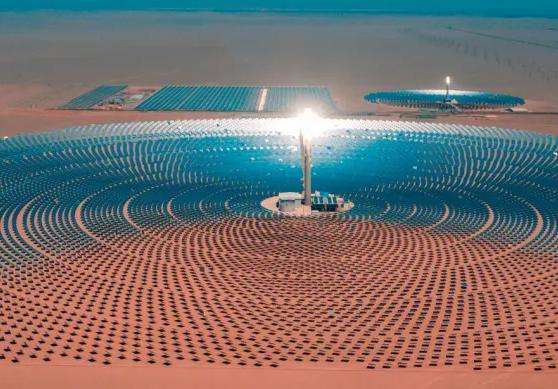According to the crystalline state, solar cells can be divided into two categories: crystalline thin film type and amorphous thin film type (hereinafter referred to as a-), and the former is divided into single crystalline form and polycrystalline form.
According to materials, it can be divided into silicon thin film type, compound semiconductor thin film type and organic film type. The compound semiconductor thin film type is further divided into amorphous type (a-Si: H, a-Si: H: F, a-SixGel-x: H, etc.), Group IIIV (GaAs, InP, etc.), Group IIVI (Cds series) and zinc phosphide (Zn3p2), etc.
According to the different materials used, solar cells can also be divided into: silicon solar cells, multi-compound thin-film solar cells, polymer multi-layer modified electrode solar cells, nanocrystalline solar cells, solar cells organic solar. , including cellsSilicon solar power currently constitutes the most mature and dominant applications.
(1) Silicon solar cells
Silicon solar cells are divided into three types: monocrystalline silicon solar cells, polycrystalline silicon thin film solar cells and polycrystalline silicon thin film solar cells. thin-film amorphous silicon solar cells.
Monocrystalline silicon solar cells have the highest conversion efficiency and the most mature technology. The highest laboratory conversion efficiency is 24.7% and the large-scale production efficiency is 15%. It still occupies a dominant position in large-scale applications and industrial production. However, due to the high cost and price of monocrystalline silicon, it is difficult to greatly reduce its cost in order to save silicon materials, polycrystalline silicon films and siliconamorphous. films have been developed as monocrystalline silicon solar cells.
Compared to monocrystalline silicon, polycrystalline silicon thin-film solar cells are cheaper and more efficient than amorphous silicon thin-film cells. The maximum conversion efficiency in the laboratory is 18%, and the conversion efficiency in industrial-scale production is 18%. 10%. Therefore, polycrystalline silicon thin film cells will soon dominate the solar energy market.
Amorphous silicon thin film solar cells have low cost, light weight, high conversion efficiency, easy mass production and great potential. However, due to the photoelectric efficiency degradation effect caused by its material, its stability is not high, which directly affects its practical application. If the stability problem and the problemof the conversion rate can be further resolved, then large amorphous silicon solar cells will undoubtedly be one of the main development products of solar cells.
(2) Multi-compound thin-film solar cell
The materials of multi-compound thin-film solar cells are inorganic salts, which mainly include arsenide compounds of gallium III-V, cadmium sulfide, cadmium. sulfide and copper-indium-selenium thin film batteries, etc.
Cadmium sulfide and cadmium telluride polycrystalline thin-film solar cells are more efficient than amorphous silicon thin-film solar cells, less expensive than monocrystalline silicon cells, and are easy to produce in mass. However, cadmium is. highly toxic, will cause serious environmental pollution, so it is not the most ideal substitute for sol cellscrystalline silicon areas.
The conversion efficiency of III-V gallium arsenide (GaAs) compound cells can reach 28%. The GaAs compound material has a very ideal optical band gap and high absorption efficiency, and has strong radiation and heat resistance. sensitive, suitable for manufacturing high efficiency single junction batteries. However, GaAs materials are expensive, which significantly limits the popularity of GaAs batteries.
Copper indium selenide thin film cells (CIS for short) are suitable for photoelectric conversion. There is no light-induced degradation problem, and the conversion efficiency is the same as polycrystalline silicon. With the advantages of low price, good performance and simple process, it will become an important direction for the development of solar cells in the future. The only problem lies in the source of thematerials. Indium and selenium being relatively rare elements, the development of this type of battery is necessarily limited.
(3) Polymer multilayer modified electrode solar cells
Replacing inorganic materials with organic polymers is a research direction in solar cell manufacturing that is just emerging. to start. Due to the advantages of organic materials such as flexibility, ease of production, wide material sources and low cost, they are of great importance for the large-scale utilization of solar energy and electricity supply cheap. However, research into using organic materials to prepare solar cells is only just beginning. Neither the lifespan nor the efficiency of the cells can be compared to that of inorganic materials, especially silicon cells. It remains to be studied and explored furthers in detail if it can become a product of practical importance.
(4) Nanocrystalline solar cells
Nano-TiO2 crystal chemical solar cells are newly developed, and their advantages lie in low cost, simple process and stable performance. Its photoelectric efficiency is stable at more than 10%, and its production cost is only 1/5 to 1/10 of that of silicon solar cells. The lifespan can reach more than 20 years.
However, as the research and development of this type of battery has just started, it is estimated that it will gradually enter the market in the near future.
(5) Organic solar cells
Organic solar cells, as their name suggests, are solar cells whose core is composed of organic materials. It makes sense that not everyone is familiar with organic solar cells. More than 95% of solar cells producedin series today are based on silicon, while the remaining less than 5% are also made of other inorganic materials.














